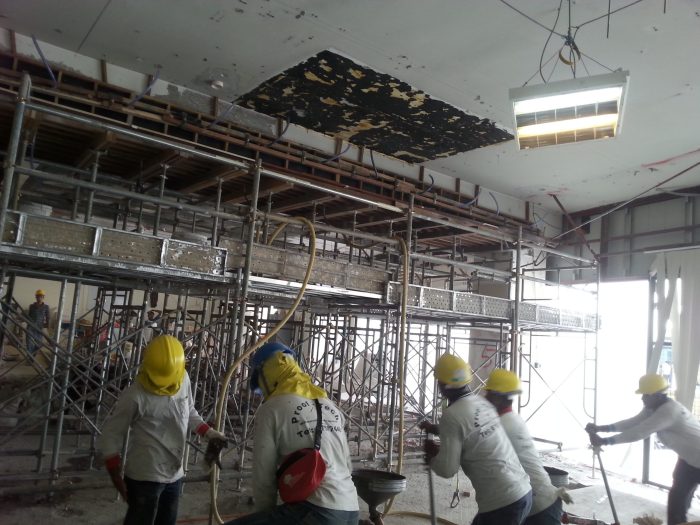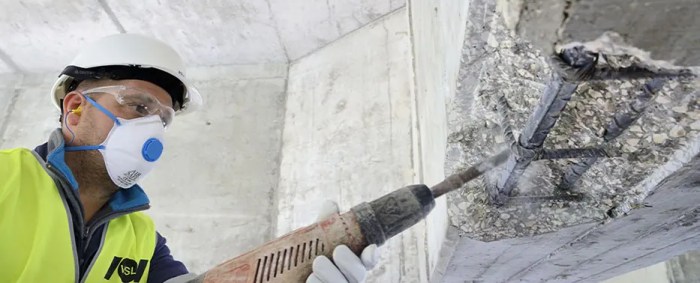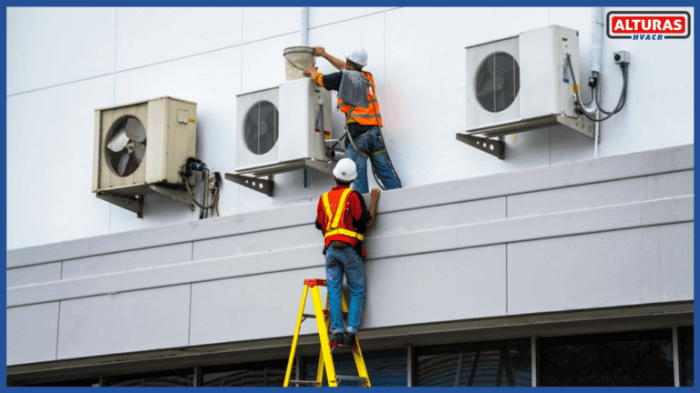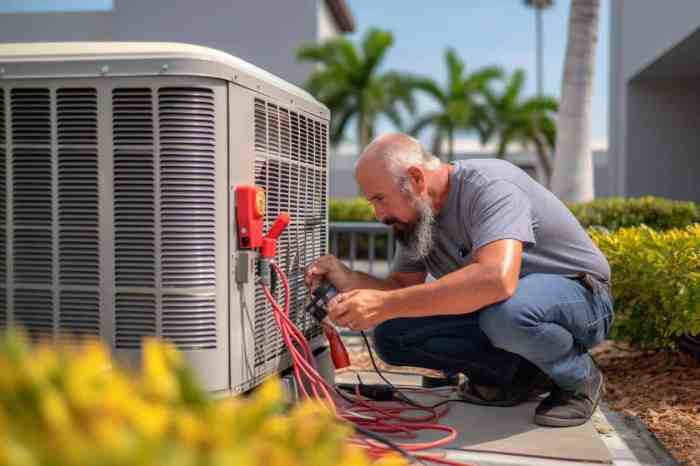Exploring the realm of structural repair contractors, this introduction delves into their crucial role in the construction industry. From handling diverse projects to ensuring project success, these professionals play a vital role in maintaining structural integrity.
As we navigate through the following sections, we will uncover the skills, techniques, and safety practices that define the work of structural repair contractors.
Understanding Structural Repair Contractors
Structural repair contractors play a crucial role in the construction industry, specializing in the repair and reinforcement of damaged or deteriorating structures. They are responsible for ensuring the safety, stability, and longevity of buildings and other infrastructure.
Types of Projects Handled by Structural Repair Contractors
- Foundation Repair: Fixing issues with the building's foundation, such as cracks, settling, or water damage.
- Concrete Restoration: Repairing concrete structures like bridges, parking garages, or dams.
- Structural Strengthening: Reinforcing existing structures to meet updated safety standards or accommodate additional loads.
- Masonry Repair: Restoring brickwork, stonework, or other masonry elements that have been damaged.
Importance of Hiring Qualified Structural Repair Contractors
It is essential to hire qualified structural repair contractors for project success to ensure the work is done correctly and safely. These professionals have the expertise, experience, and specialized equipment needed to address structural issues effectively. By hiring reputable contractors, you can have peace of mind that your building or infrastructure will be restored to its optimal condition.
Skills and Qualifications

Becoming a structural repair contractor requires a specific set of skills and qualifications to ensure the safety and integrity of buildings and structures. Individuals pursuing this career path must undergo training and obtain certifications to demonstrate their expertise in structural repair.
Training and Certifications
- Completion of a formal education program in construction management, engineering, or a related field
- Hands-on training in structural repair techniques and methods
- Obtaining certifications such as Certified Structural Repair Specialist (CSRS) or Certified Structural Repair Technician (CSRT)
Comparison with Other Construction Professionals
Structural repair contractors possess a unique skill set that distinguishes them from other construction professionals. While they share some similarities in terms of construction knowledge, structural repair contractors specialize in identifying and fixing structural issues within buildings.
Structural Repair Techniques
Repairing structural damage requires a variety of techniques that are chosen based on the specific issue at hand. These techniques are crucial in restoring the integrity and stability of a building. Let's explore some common structural repair techniques used by contractors in the industry and situations where they are more suitable than others.
Concrete Repair
Concrete repair is a common technique used to address cracks, spalling, or deterioration in concrete structures. Contractors often use epoxy injections to fill cracks and restore the strength of the concrete. In situations where the damage is localized and minor, concrete repair is a cost-effective solution that can prevent further deterioration.
Carbon Fiber Reinforcement
Carbon fiber reinforcement is a technique used to strengthen structural elements such as beams, columns, and walls. This method involves applying carbon fiber sheets or strips to the surface of the structure and bonding them with epoxy. Carbon fiber reinforcement is particularly suitable for situations where traditional reinforcement methods are not feasible or cost-effective.
Steel Plate Bonding
Steel plate bonding is another common repair technique used to reinforce damaged or weakened structural components. Contractors attach steel plates to the surface of the structure using epoxy or welding methods
Advancements in Technology
Advancements in technology have significantly improved structural repair methods in recent years. For example, the development of high-performance materials such as carbon fiber composites has made it possible to strengthen structures without adding significant weight. In addition, the use of advanced imaging techniques such as ground-penetrating radar has enabled contractors to accurately assess the extent of damage and plan effective repair strategies.
Safety Practices

Ensuring safety is paramount for structural repair contractors to protect themselves, their team members, and the occupants of the building undergoing repairs.
Importance of Safety Protocols
- Wearing appropriate personal protective equipment (PPE) such as hard hats, gloves, and safety goggles can prevent injuries from falling debris or hazardous materials.
- Following proper procedures for working at heights, including using safety harnesses and securing ladders, reduces the risk of falls.
- Implementing proper ventilation and respiratory protection when working with chemicals or in confined spaces is essential to prevent exposure to harmful substances.
- Regularly inspecting tools and equipment for defects or damage can prevent accidents during repair work.
Safety Measures for Contractors
- Conducting thorough risk assessments before starting any repair project to identify potential hazards and develop mitigation strategies.
- Providing safety training to all team members on proper procedures, emergency protocols, and the correct use of safety equipment.
- Maintaining a clean and organized work environment to prevent tripping hazards and ensure easy access to emergency exits.
- Establishing clear communication channels to relay safety information, address concerns, and coordinate emergency responses effectively.
Impact of Safety Regulations
- Compliance with safety regulations set by local authorities and industry standards is mandatory to avoid legal repercussions and penalties.
- Adhering to safety protocols enhances the reputation of the contractor, instilling trust and confidence in clients and stakeholders.
- Prioritizing safety not only protects lives but also minimizes project delays, reduces insurance costs, and improves overall efficiency in structural repair work.
Final Conclusion

In conclusion, structural repair contractors are the unsung heroes of the construction world, ensuring safety, durability, and quality in every project they undertake. Their expertise and dedication pave the way for a sturdy and reliable built environment.
Question Bank
What are the typical projects handled by structural repair contractors?
Structural repair contractors commonly work on projects involving foundation repairs, structural reinforcements, and building stabilization.
What qualifications are needed to become a structural repair contractor?
To become a structural repair contractor, one needs a combination of relevant skills such as carpentry, masonry, and concrete work, along with certifications in structural repair techniques.
How do advancements in technology impact structural repair methods?
Technological advancements have revolutionized structural repair methods by introducing innovative solutions like carbon fiber reinforcement and drone inspections for more efficient and precise repairs.







